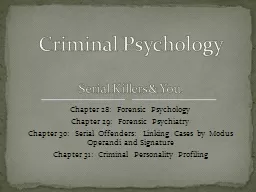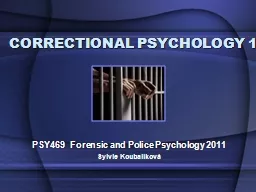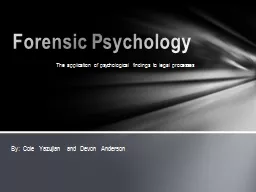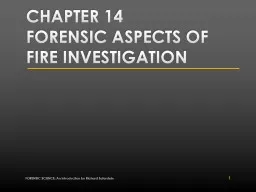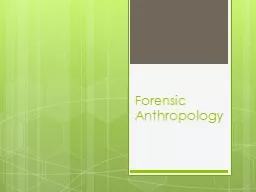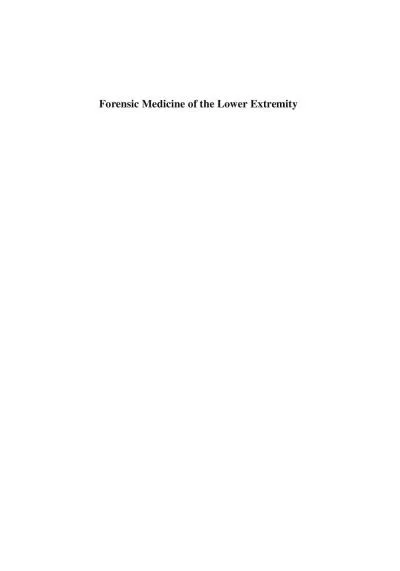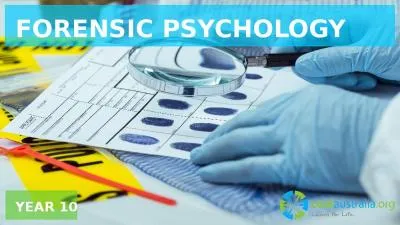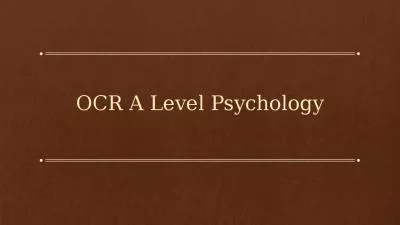PPT-Chapter 28: Forensic Psychology
Author : olivia-moreira | Published Date : 2019-02-14
Chapter 29 Forensic Psychiatry Chapter 30 Serial Offenders Linking Cases by Modus Operandi and Signature Chapter 31 Criminal Personality Profiling Criminal Psychology
Presentation Embed Code
Download Presentation
Download Presentation The PPT/PDF document "Chapter 28: Forensic Psychology" is the property of its rightful owner. Permission is granted to download and print the materials on this website for personal, non-commercial use only, and to display it on your personal computer provided you do not modify the materials and that you retain all copyright notices contained in the materials. By downloading content from our website, you accept the terms of this agreement.
Chapter 28: Forensic Psychology: Transcript
Download Rules Of Document
"Chapter 28: Forensic Psychology"The content belongs to its owner. You may download and print it for personal use, without modification, and keep all copyright notices. By downloading, you agree to these terms.
Related Documents

